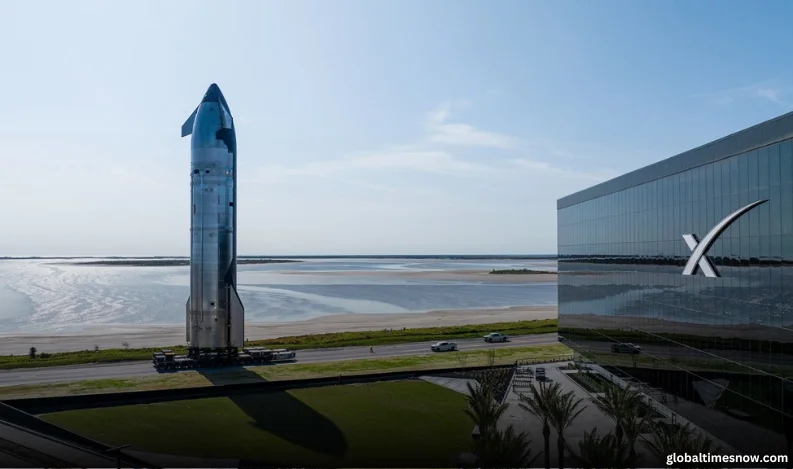Washington, United States: In a last-minute decision, Elon Musk's SpaceX called off the much-anticipated test flight of its Starship rocket on Monday, citing an unspecified technical issue with the massive spacecraft.
“Standing down from today’s flight test attempt,” SpaceX posted on X, the social media platform owned by Musk. “Starship team is determining the next best available opportunity to fly.”
The world’s most powerful rocket was scheduled for an uncrewed liftoff at 6:45 PM (2345 GMT) from SpaceX’s Starbase facility in Boca Chica, Texas. However, a new launch date has not been confirmed. SpaceX employee Dan Huot suggested during a live broadcast that a rescheduled attempt could occur within 24 hours.
Starship’s Critical Role in Space Exploration
This mission marks Starship’s eighth orbital test and the first since its dramatic mid-air explosion over the Caribbean during its last trial. The towering 403-foot (123-meter) rocket, nearly 100 feet taller than the Statue of Liberty, is key to Musk’s vision of space colonization and Mars exploration.
Additionally, NASA is awaiting a modified version of Starship for its Artemis program, which aims to return astronauts to the Moon. The US space agency is closely monitoring the spacecraft’s progress as it plans for deep-space missions.
FAA and Regulatory Challenges
The US Federal Aviation Administration (FAA) grounded Starship after its previous flight on January 16 ended in failure, with the upper stage disintegrating in a fiery cascade over the Turks and Caicos Islands. Cleanup efforts for debris followed, raising environmental and safety concerns.
Last Friday, the FAA stated that Starship could return to flight before its review of SpaceX’s mishap investigation is finalized. During Joe Biden’s presidency, Musk frequently accused the FAA of excessive scrutiny. Now, as one of President Donald Trump’s closest advisors, Musk faces scrutiny over his influence on regulatory agencies overseeing his ventures.
Upgrades and Mission Objectives
For this upcoming test, SpaceX has introduced upgrades to the upper-stage spacecraft, focusing on reliability and performance enhancements. The mission, expected to last just over an hour, includes an ambitious attempt to catch the booster stage using the launch tower’s “chopstick” arms—an engineering feat SpaceX has executed successfully twice.
Additionally, SpaceX will deploy Starlink simulators to replicate next-generation Starlink satellites. These simulators will burn up upon atmospheric re-entry, testing new satellite deployment strategies.
Long-term, SpaceX aims for full reusability of the upper stage. However, for now, the spacecraft is targeting an ocean splashdown off the west coast of Australia, similar to previous flights.
Challenges of Full Reusability
In a recent interview on The Joe Rogan Experience, Musk highlighted the biggest technical challenge facing Starship: the heat shield.
“We’ve got to solve making a fully reusable orbital heat shield, a problem that has never been solved before,” Musk explained. He remains optimistic, stating that SpaceX is “pretty close to achieving full and rapid reusability of the booster,” with a goal of full-stack reusability—both the rocket and booster—by next year.
Before achieving its ambitious goals, SpaceX must prove Starship’s reliability and safety for crewed missions. Another critical milestone is demonstrating complex in-orbit refueling, a necessity for long-duration space travel.
As the spaceflight community watches closely, the next launch attempt will be a crucial test of SpaceX’s advancements in reusable rocket technology.























